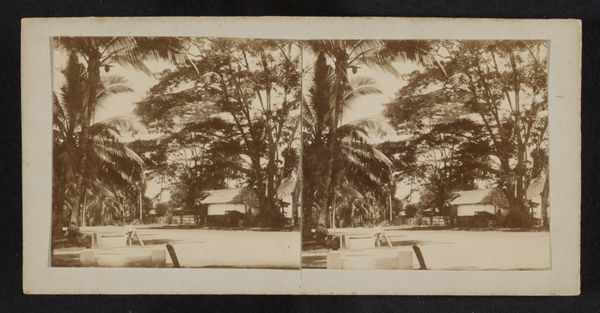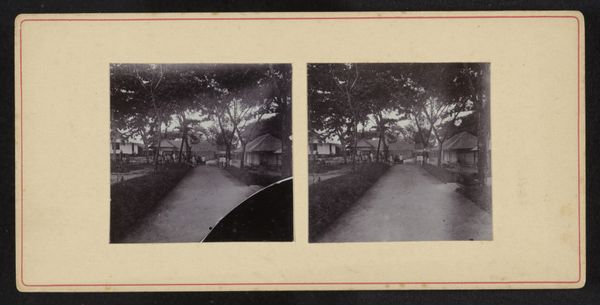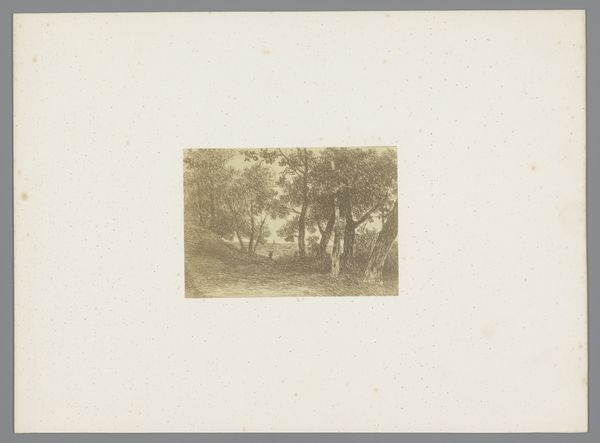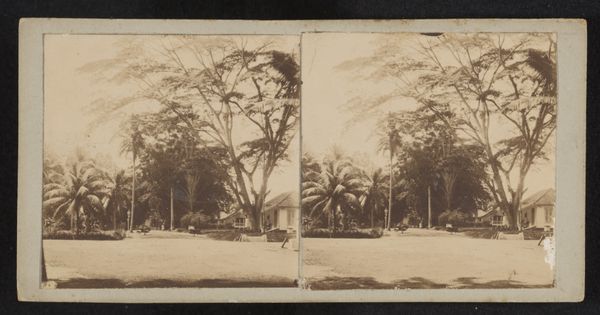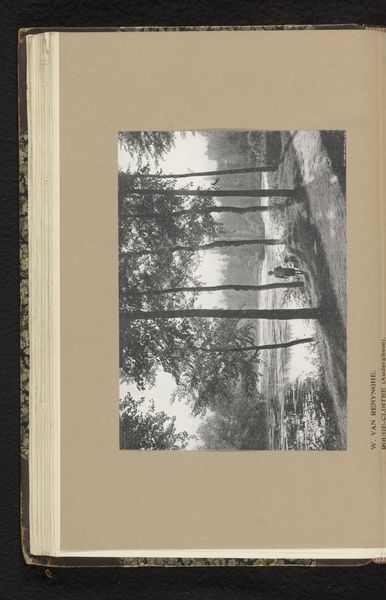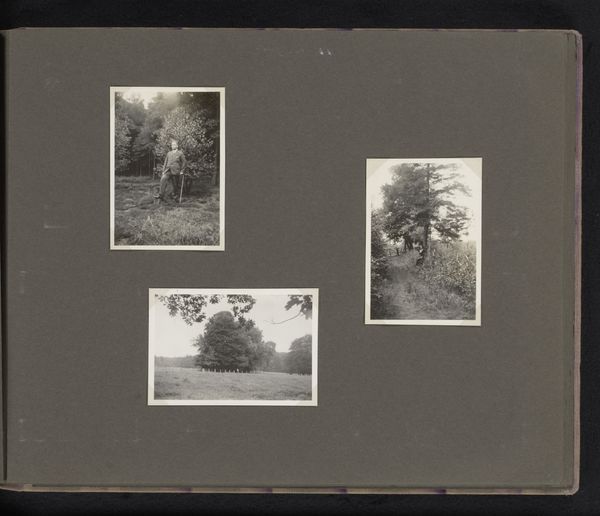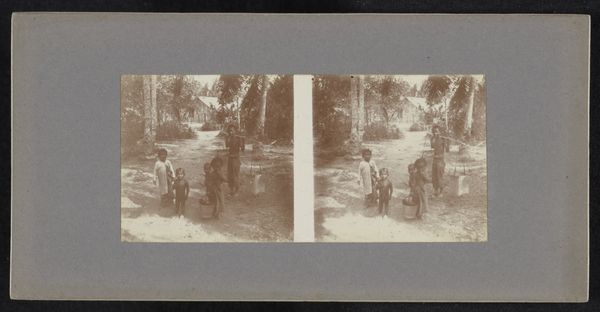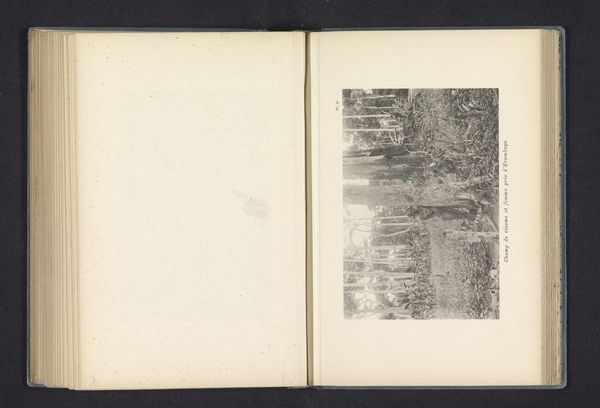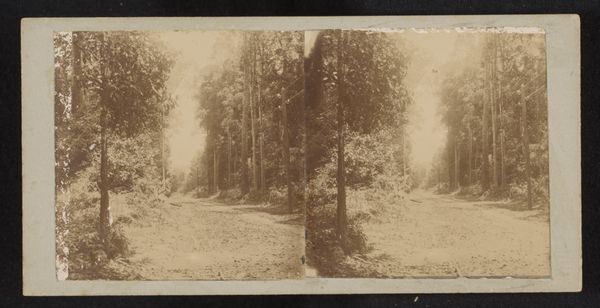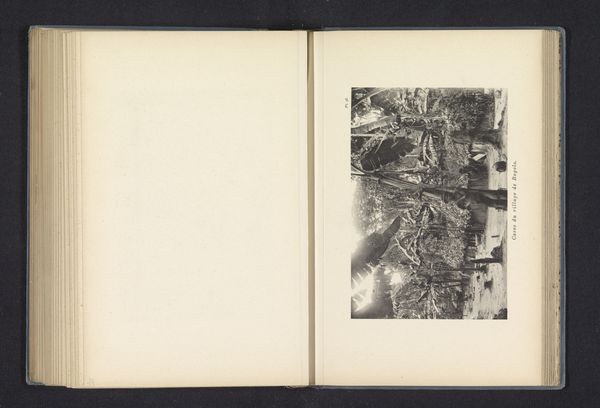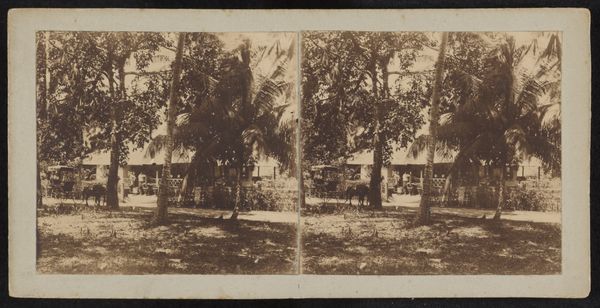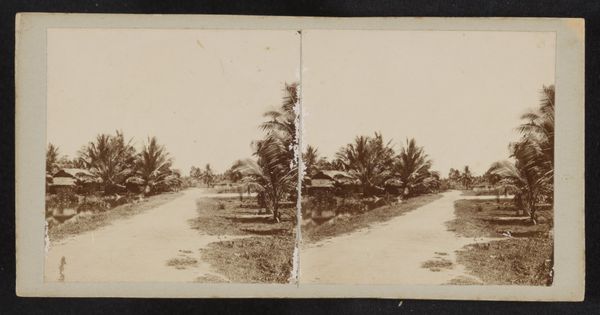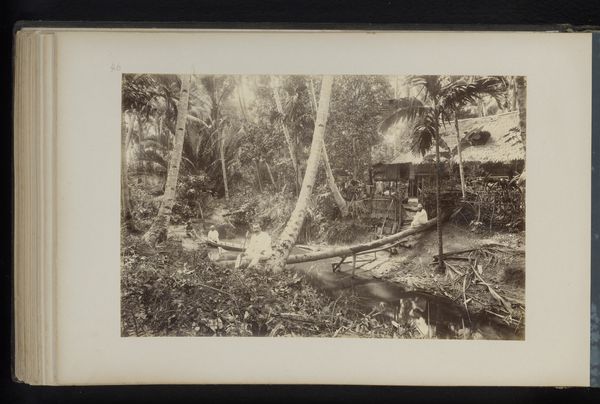
photography, gelatin-silver-print
#
pictorialism
#
landscape
#
photography
#
coloured pencil
#
orientalism
#
gelatin-silver-print
Dimensions: height 54 mm, width 60 mm, height 88 mm, width 178 mm
Copyright: Rijks Museum: Open Domain
Editor: Here we have Robert Julius Boers' "Palmen," taken sometime between 1900 and 1922, a gelatin silver print now at the Rijksmuseum. The first thing that strikes me is the almost overwhelming repetition of vertical lines created by the palm trees. It’s both calming and slightly disorienting. What do you see in this piece? Curator: The formal arrangement of the trees does indeed dominate. Notice how Boers has carefully structured the composition, using the trees as framing devices, guiding the eye into the depth of the image. The monochromatic palette further emphasizes the formal qualities, reducing the scene to a study in light and shadow, texture and form. Editor: So, you're focusing on the visual elements rather than any deeper meaning? Curator: Precisely. The charm of the photograph lies in how Boers orchestrates these formal elements. The light, for instance, dapples the tree trunks and the ground, creating a play of textures that engages the eye. The composition presents not merely a depiction, but an exercise in pictorial structure and photographic process. Is this something you notice in the other photography from the era? Editor: I can see that now. I was so caught up in the subject matter – a grove of palm trees suggests a certain exoticism – that I didn't fully appreciate the artistry in its arrangement and the way the light functions. It's like the trees are subjects, but also compositional tools. Curator: Precisely. Boers' manipulation of the medium allows him to elevate the ordinary into the extraordinary, a core tenet of pictorialist photography. One learns to interpret by looking at constituent parts such as form and medium. Editor: That’s a different perspective that makes me reconsider photography's artistry beyond just documenting. It shows it has its own language and concerns.
Comments
No comments
Be the first to comment and join the conversation on the ultimate creative platform.
